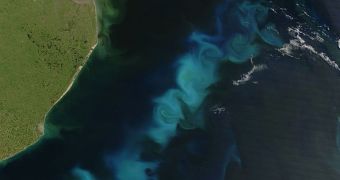Futuristic ships could one day scour the world's oceans, taking water from underneath and blasting it high into the sky. This procedure, some believe, could contribute to forming new clouds that would reflect more sunlight back into space, thus reducing global warming. The idea is now being reviewed.
This is the second time that experts are looking at the ups and downs of employing such a measure. This approach is part of a series of measures collectively known as geoengineering, whose main goal is to modify Earth at a planetary scale.
Other geoengineering methods include seeding the ocean with iron nanoparticles that would boost phytoplankton blooms, seeding clouds through a variety of methods, artificially boosting the amount of carbon dioxide the world's waters can absorb, and so on.
In a paper published in the August issue of the esteemed journal Philosophical Transactions of the Royal Society, University of Washington atmospheric physicist Rob Wood details a way to set up a small-scale experiment meant to assess whether or not shooting saltwater in the air would work.
The idea is to increase the amount of water in the air to such an extent that new clouds would form on a clear sky. These atmospheric structures would then prevent a large amount of sunlight from entering the lower atmosphere, and from being made a part of the greenhouse effect.
Consequently, this would lead to a decrease in the severity of global warming and climate change, at least in theory. The approach would however have to be applied at a planetary scale, not just locally, e! Science News reports.
“What we're trying to do is make the case that this is a beneficial experiment to do,” Wood says, adding that it may soon become possible to acquire the funds necessary for setting up such an endeavor.
The key component of this plan is the salt in seawater. Since water droplets form around nuclei, seeding more particles into the atmosphere would lead to the creation of an increased number of droplets, albeit smaller than usual.
“It turns out that a greater number of smaller drops has a greater surface area, so it means the clouds reflect a greater amount of light back into space,” Wood explains, arguing that the approach deserves a fair shot at proving its worth.
In the same paper on marine cloud brightening, the expert and his team argue that studies on the potential impacts of this geoengineering method need to be conducted beforehand, in order to assess any potentially-negative, long-lasting side-effects on the marine environment.

 14 DAY TRIAL //
14 DAY TRIAL //